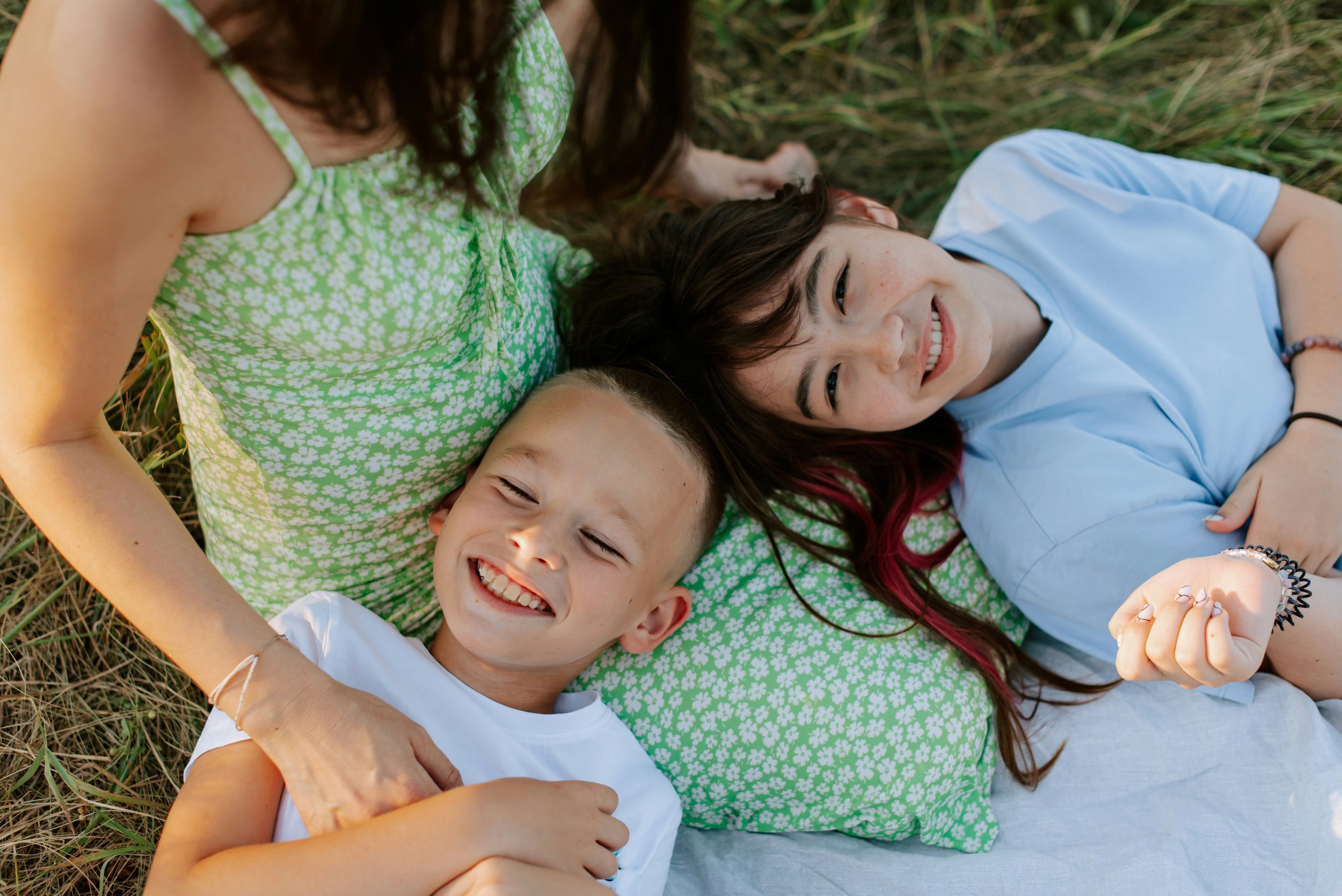Helping a Child with Anxiety Starts with You
When it comes to helping a child with anxiety, the first and most powerful tool a parent has isn’t a checklist or a technique, it’s themselves. Specifically, it’s their own ability to manage stress and anxiety. Children are highly attuned to the emotional climate of their home, especially the emotional cues of their caregivers.
In fact, research shows that children of anxious parents are up to seven times more likely to develop anxiety themselves.
That’s why one of the foundational elements of the Fear-Less Triple P (Positive Parenting Program) is helping parents manage their own anxiety first. This isn’t about perfection, it’s about presence.
When you model calmness and thoughtful problem-solving, you send a powerful, silent message to your child: "We can do hard things. And we can do them together."
Eight-year-old Lucy had been looking forward to her school play for weeks, until the night before. As bedtime neared, she began to complain of a sore stomach, tears in her eyes. “What if I forget my line? What if everyone laughs at me?”
Her mum, Emma, felt the familiar tightening in her own chest. Public speaking had always been a challenge for her too. In the past, she might have said, “You don’t have to go if it’s too hard,” trying to protect Lucy.
But this time, Emma paused. She took a slow breath, reminded herself of the "calm parent" strategy from Fear-Less Triple P, and knelt beside Lucy.
“I know that nervous feeling, I get it too sometimes,” Emma said gently. “But remember last year’s swimming carnival? You were nervous then, and you still did it—and you were so proud afterward. Let’s take a few deep breaths together.”
They did “square breathing” side-by-side, breathe in for 4, hold for 4, out for 4, pause for 4. Then, together, they imagined the stage and practiced the first few lines. By the time Lucy was tucked into bed, she wasn’t completely free of anxiety, but she felt safe, supported, and not alone in her fear.
From a neuroscience perspective, your child’s brain is still developing the ability to regulate emotion.
The prefrontal cortex, responsible for logical thinking and emotional control, is still under construction well into the teenage years. In moments of stress, your child often looks to your nervous system to know how to respond.
When you model calmness, through deep breathing, staying grounded, or simply using a soothing voice, you help co-regulate their distress. In essence, your calm brain “lends” theirs a sense of safety.
A 2021 study in Child Development , found that parental modelling of emotion regulation significantly predicts lower anxiety levels in children over time.
Small Steps for Facing Big Fears
A hallmark of anxiety is avoidance, and while avoidance can reduce anxiety in the short term, it makes it worse over time. That’s why the Fear-Less Triple P approach encourages gradual exposure, helping children face fears step by step, building confidence along the way.
Example: If your child has social anxiety, don’t start by sending them to a large party. Start with something like:
Saying “hi” to the neighbour
Ordering at a café
Having a short playdate with one friend
Celebrate effort, not outcome. “I noticed you spoke to the barista today, that was really brave,” is more helpful than “See? It wasn’t so bad!”
Build Emotional Regulation Skills—Together
Emotional regulation isn’t just for kids. When you practice calming strategies with your child, you normalise these skills as part of daily life.
Try This: Create a “Calm Down Corner” at home. Fill it with things like:
A breathing prompt card (“Smell the flower, blow out the candle”)
A weighted stuffed animal or blanket
A feelings chart
A glitter jar to shake and watch settle
Use it together, not just when emotions run high. Practicing during calm moments makes the strategies more accessible when anxiety spikes.
Predictability Reduces Panic
Children with anxiety thrive in environments that feel predictable and safe. Uncertainty can heighten worry, so clear routines, boundaries, and communication are essential.
Tip: Use visual schedules or simple verbal check-ins like:
“Here’s what’s happening after school today…”
“I’ll pick you up at the same gate as yesterday.”
According to Beyond Blue, anxious children often worry about being separated from their parent, so routines, transitions, and reassurance help reduce this fear over time.
Managing your own anxiety is the first and most lasting step in helping your child cope with theirs.
You don’t have to be anxiety-free. You just need to be anchored enough to show them it’s possible to walk through fear with courage and calm.
By modelling calmness, teaching problem-solving, and practicing emotional regulation, you’re giving your child more than tools, you’re giving them the confidence to face life head-on.
As Fear-Less Triple P reminds us: You don’t have to remove every fear. Just teach them they’re not alone in it.
